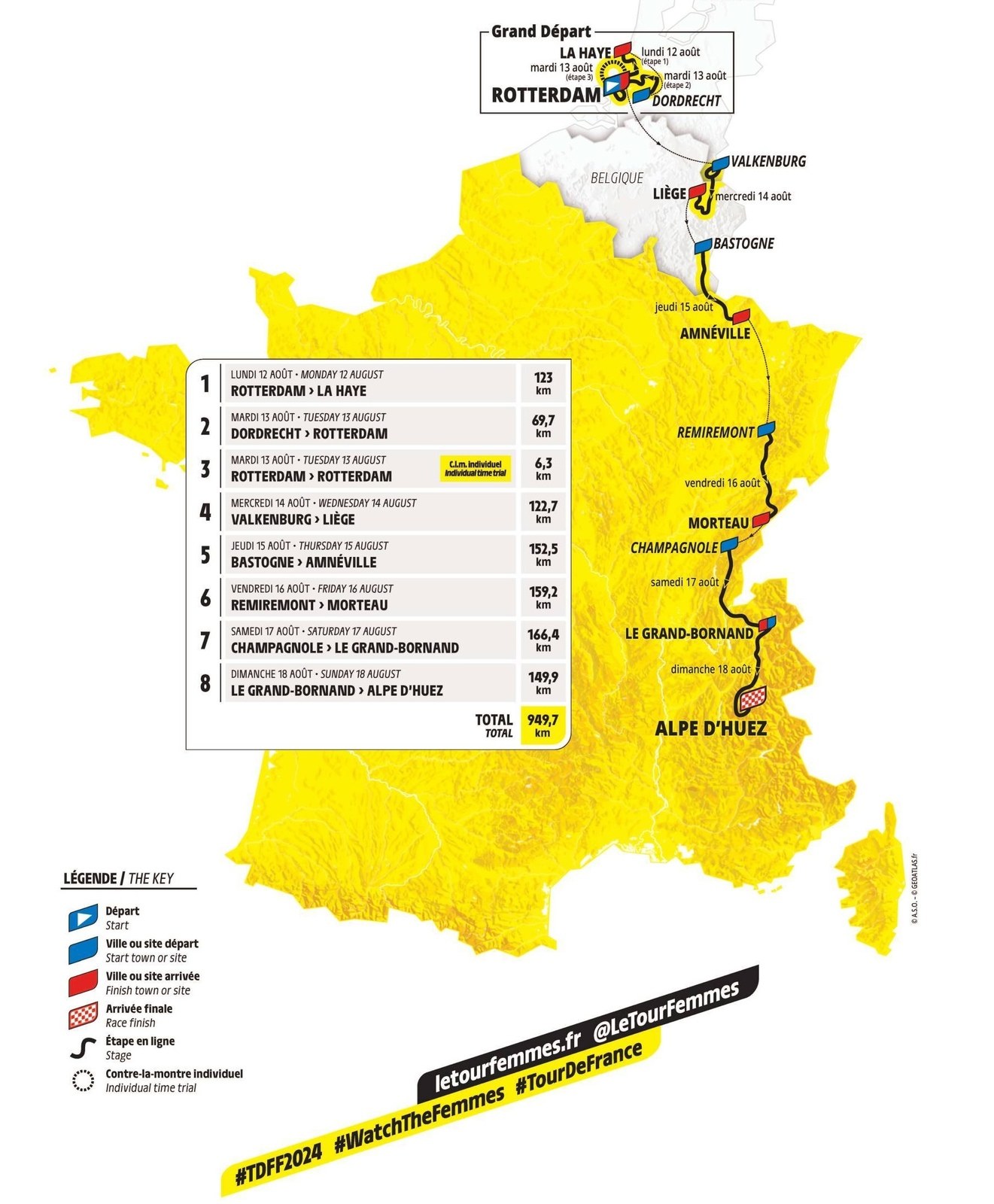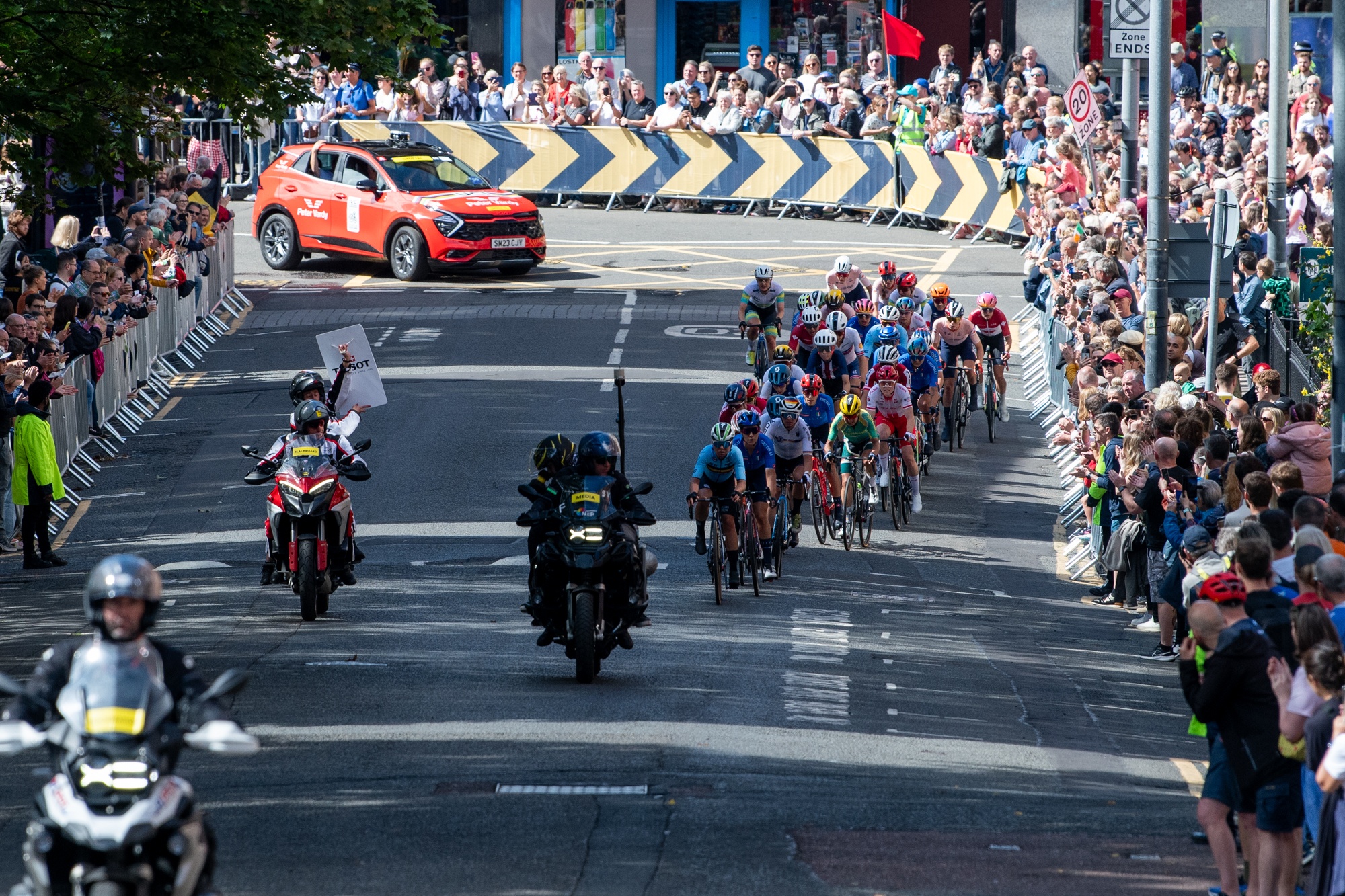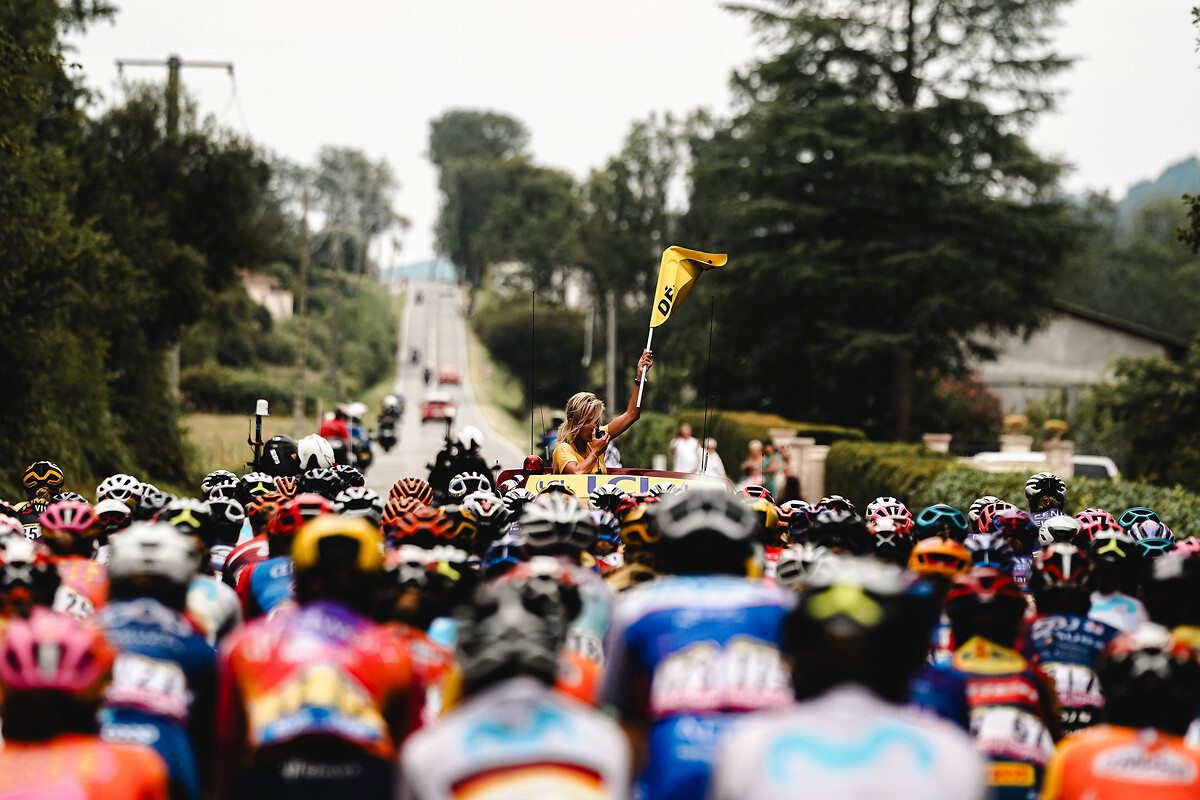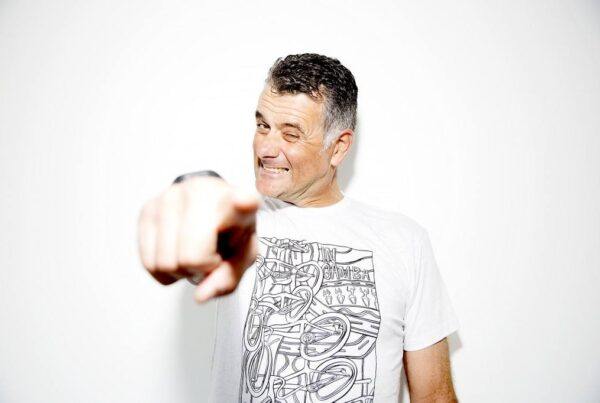The Tour de France Femmes avec Zwift kicks off on August 12, as the perfect antidote to post-Olympic blues. With eight stages of racing in the arguably most important women’s stage race of the season, there’s a lot to get excited about. If you’re new to being a cycling fan, stage races can be a little confusing, but don’t worry: We’re here to provide your quick-hit guide to everything you need to know to enjoy the race.
When is the Tour de France Femmes?
The Tour de France Femmes starts Monday, August 12 and runs through Sunday, August 18, with eight stages of racing—including an unprecedented two stages on Tuesday! Stages one and two are flat and fast, stage three is a super-short time trial, stages four and six are hilly, stage five is flat, and the race finishes with two mountain stages… And not only that, the final stage ends at the top of the famous Alpe d’Huex climb.
How to watch the Tour de France Femmes
In the US, viewers can watch on NBC Sports and Peacock, NBC’s app. In Canada, FloBikes will have the broadcast. And in Europe, tune into Eurosport. Highlights are available a few hours after the races, but full coverage will generally start on Peacock around 9:20AM EST.

Which stages to tune into at the Tour de France Femmes
One of the best parts about the Tour de France Femmes is arguably that you can truly watch every one of the eight stages and just devour the race all week. The stages tend to be shorter than those in the Tour de France, which arguably makes each stage that much more exciting.
That said… If you can only spend two days watching the action, call in sick to work on Tuesday so you get to watch the excitement of a flat stage with a nearly guaranteed sprint finish followed by a blisteringly fast individual time trial that could make or break the general classification (GC). Then, make plans to stay at home on Sunday morning to watch the final stage in the mountains, where there’s a chance the GC could have a major shakeup, depending on what’s happened in the prior stages. The finale to this race is always emotional and epic, and with l’Alpe d’Huez as the final climb, it’s going to be absolutely iconic this year.

What’s exciting about this year’s race in particular?
This year, all eyes are on the two stage day to see how it shakes out. Between that and the Alpe d’Huez finishing climb on the last day, the course and race design itself is one of the major points of interest in the race. This is also the first year that the TDFF starts outside of France, in Rotterdam—this is partially due to sponsor opportunities, but primarily due to the fact that Paris was not an option given the Olympic Games. (The Tour de France also started outside of France this year, in Italy.)
All eyes are going to be on riders like Demi Vollering and Kasia Niewiadoma, who were expected to be in medal contention at the Olympics but had lackluster races. We’ll also be watching the riders who did excel at the Games, including American Kristen Faulkner, who became the first American woman in 40 years to get the gold in the road race… and then followed it up with a gold medal on the track in the team pursuit. Will she be worn out from the Olympics, or will she be riding on the high of a gold medal to her name? It’s also simply heading towards the end of a brutally long season, so some riders will be more tired than others—many began racing as early as March, so it’s been nearly six months since they’ve had a prolonged break. There could be some riders who weren’t at the Olympics who could come in and snag a stage win simply because they had a break in racing and the stress of racing compared to those living in the Olympic village.
What do the colored jerseys mean in the race?
While stage wins—the rider who crosses the line in first place on any given stage—are important, in stage races, riders are battling for the overall title, AKA the General Classification, or GC. The rider who’s leading the stage race GC is the rider wearing the yellow jersey. The green jersey is the sprinter’s jersey and is awarded to the rider who scores the most sprint points, which can be picked up mid-race in certain spots and at the finish line. The polka dot jersey is worn by the Queen of the Mountains, the rider who has the best times on certain climbing segments in the stages. Finally, the white jersey is awarded to the best rider under 26 years old in the GC.

Who are the Riders to watch in the Tour de France Femmes?
- Demi Vollering: Last year’s GC winner, Vollering has won every stage race she’s been in this year and will almost certainly be the rider to beat, especially since her top contender—teammate Lotte Kopecky—isn’t on the start list. She’s likely to be in the yellow jersey relatively early on, and possibly the polka dot jersey as well.
- Kasia Niewiadoma: Niewiadoma came so close to a stage win on the famed Tourmalet climb last year at this race in one of the most courageous solo efforts we’ve ever seen. She was ultimately bested by Vollering, but she’s spent the last year training at altitude and making it her mission to be ready for this race. She could be in the polka dot jersey again, but could also potentially end up in yellow.
- Marianne Vos: Vos is the GOAT of women’s cycling, with two decades of racing under her belt. She won the gold medal in 2012 in London, and this year, she got the silver in a sprint. She may not be able to keep up in the mountains, but look for her on the flat stages—and watch for her in the green jersey. She’s a tactically brilliant racer.
- Chloe Dygert: Dygert had a fantastic Olympic time trial but unfortunately crashed in the road race. She likely will be recovered and in fighting form for the start of the TDFF—we hope!—and will be racing for revenge after having her Olympic dreams abruptly concluded. We could see her in the leader’s jersey at some point in the race.
- Emma Norsgaard: Norsgaard is one to watch for the young rider’s jersey—while she hasn’t had any breakout results yet this season, she’s often in the mix in attacks and working for her Movistar teammates, and that tends to keep her high in the young rider standings.














